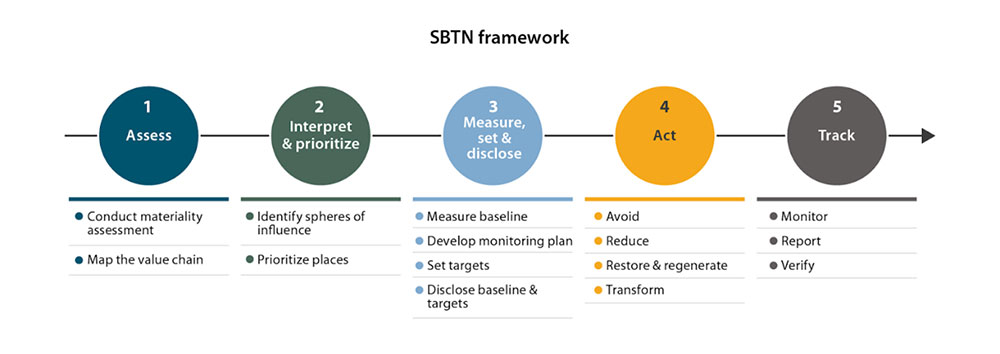The vision of the network is to ensure that cities and companies operate within environmental boundaries so that both nature and people can thrive. To achieve this goal, the network is developing a set of science-based targets concerning freshwater, land, biodiversity and oceans intended for widespread adoption.
The SBTN brings together more than 60 organizations including NGOs, consultancies and industry associations. Its work builds on the momentum created by the Science Based Targets initiative (SBTi). The SBTi connects more than 4,000 businesses and financial institutions that all are committed to ambitious emission reduction targets in line with the latest climate science. The SBTN is a separate initiative from the SBTi, but they share the same core founding partners.
UPM’s target of achieving a -65% CO2 emission reduction in the consumption of its own fuels and purchased electricity and a -30% reduction in the CO2 emissions of its supply chain is aligned with the goals of the SBTi. Furthermore, UPM is committed to the UN’s Business Ambition for 1.5°C to take tangible actions to mitigate climate change. To reach the 1.5 °C target, UPM will focus on innovating novel products and practicing sustainable forestry.
Science Based Targets Network (SBTN) Corporate Engagement Program
Joining the SBTN Corporate Engagement Program brings many benefits
“The SBTN Corporate Engagement Program is a great opportunity to work together with a global network of experts to develop clear pathways and to find science-based means to use natural resources in a sustainable way, while also protecting and restoring nature,” says Sakari Suuriniemi, Senior Manager, Global Forest Affairs at UPM. “This collaboration is a natural continuation of our cooperation with the SBTi. It is also strongly linked to our global biodiversity program established in 1998, to our Net Positive Impact on biodiversity target set in 2018, and to our Forest Action 2030 program published in early 2022.”
“We welcome UPM to the Corporate Engagement Program and look forward to their contribution in road-testing the methods, tools and guidance for implementing science-based targets for nature,” says Jess McGlyn, Corporate Engagement Lead, Science Based Targets Network.
A five-step corporate target-setting framework was introduced by the SBTN in 2020 with the Initial Guidance for Business. Through the Corporate Engagement Program, companies can road-test the first steps of the SBTN guidance, i.e. assess their material issues across freshwater, land, biodiversity, and ocean, estimate their value chain footprints and prioritise which locations and parts of the business to get started on first.
